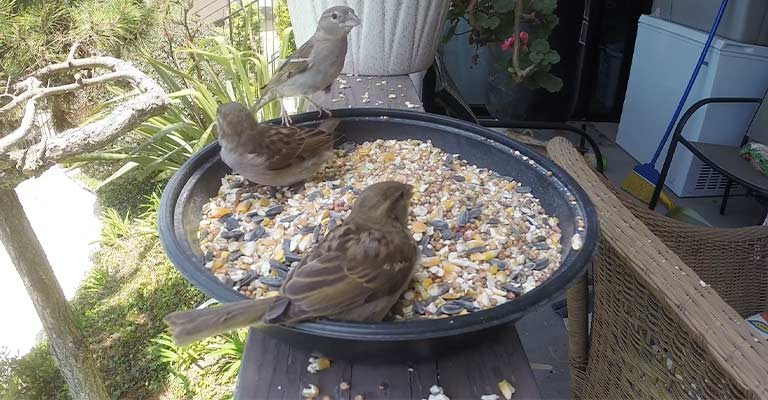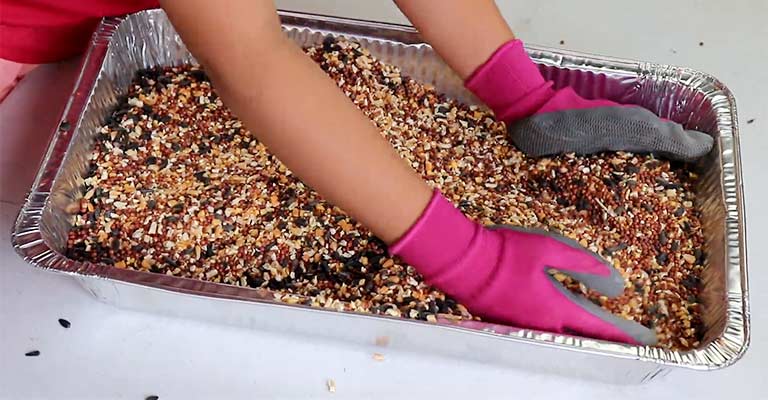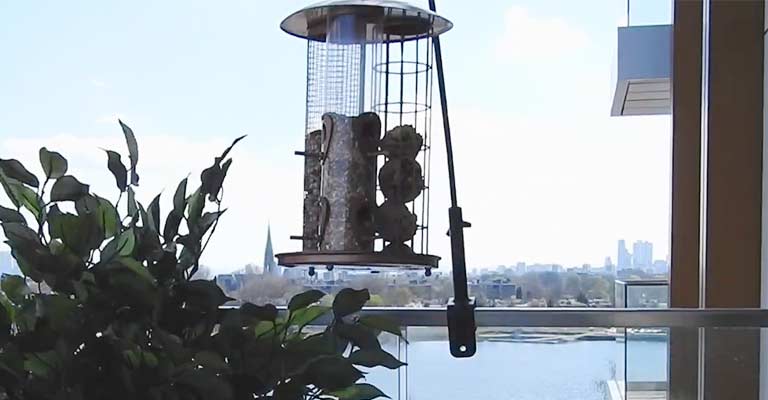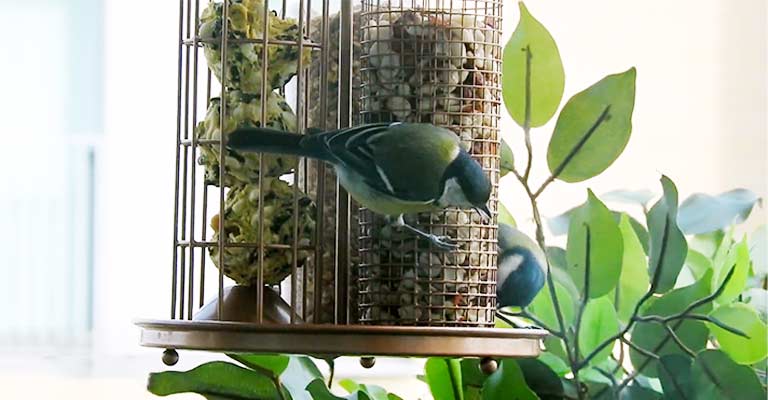Step into the enchanting world of Balcony Bird Feeding, a transformative experience that brings the wonders of nature to urban dwellers right outside their doorstep.
Amidst the ceaseless rhythm of city life, this practice allows individuals to forge a connection with the natural world, fostering a sense of tranquility amidst the chaos.
In this comprehensive guide, we delve into the art and myriad benefits of balcony bird feeding, unveiling the secrets to a harmonious coexistence with avian companions.
Discover the nuances of choosing the perfect feed, unlocking the potential to attract a diverse array of feathered visitors.
Learn the art of selecting bird-friendly accessories, from charming feeders to cozy shelters, creating an inviting haven for your avian neighbors.
Whether you’re a seasoned bird enthusiast or a novice eager to witness the enchanting dance of winged visitors, join us on a journey of discovery.
Embrace the serenity that comes with cultivating a symbiotic relationship with the avian world, all just beyond your balcony railing.

Balcony Bird Feeding: Creating a Haven for Feathered Friends in Urban Spaces
Urban living often conjures images of concrete jungles and bustling streets, but amidst the steel and glass, there lies a hidden opportunity to connect with nature – Balcony Bird Feeding.
This practice not only transforms your balcony into a lively aviary but also brings the soothing rhythms of bird songs to your doorstep.
Let’s explore everything from choosing the right feed to creating an inviting habitat for a diverse range of avian visitors.
Why Balcony Bird Feeding?
Balcony bird feeding is more than a mere hobby; it’s a conscious choice to integrate nature into our daily lives. Amid urban chaos, this practice allows us to forge a connection with the natural world.
Birds, with their vibrant plumage and melodious songs, bring a touch of wilderness to our doorstep. As we engage in balcony bird feeding, we embark on a journey of coexistence with these winged neighbors, fostering biodiversity and creating a haven of tranquility.
Choosing the Right Feed: Understanding Dietary Needs

Different bird species have varied dietary requirements. Some are seed-eaters, while others prefer insects, fruits, or nectar. Before setting up your bird feeding station, research the local bird species in your area to tailor the feed to their preferences.
This ensures that your balcony becomes an attractive spot for a diverse array of birds. Here are the types of bird feed
Seeds: A Feast for Finches and Sparrows
Seeds stand as a fundamental and universally loved food source for birds. Sunflower seeds, with their rich nutritional content, are a particular favorite among finches and cardinals. Millet, a small, energy-packed grain, attracts a wide variety of species, adding vibrancy to your balcony.
Nyjer, also known as thistle seed, is a tiny black seed that appeals to finches and other small songbirds. By incorporating these seeds into your feeding stations, you’ll witness a bustling congregation of winged visitors, each with its unique charm.
Suet: A Winter Delicacy for Woodpeckers and Nuthatches
Suet, a dense mixture of fats and other ingredients, serves as a high-energy treat, especially crucial during colder months. Woodpeckers, nuthatches, and other insect-eating birds relish suet blocks or cakes. Consider offering suet embedded with nuts or berries for an extra dash of flavor.
The richness of suet not only sustains these birds through harsh weather but also provides you with the opportunity to observe their acrobatic antics up close, adding an element of excitement to your balcony birding experience.
Nectar: Inviting Hummingbirds to Your Oasis
For those seeking the enchanting presence of hummingbirds, nectar is the key. Mimicking the natural sweetness of flower nectar, a sugar-water solution serves as an irresistible lure.
To cater specifically to hummingbirds, invest in specialized hummingbird feeders. These feeders typically feature bright colors to attract these tiny, iridescent marvels.
Hang them strategically, and watch as these delightful visitors grace your balcony with their aerial displays. Remember to change the nectar regularly to maintain its freshness and appeal.
Feeder Placement

Strategically placing feeders at different heights and locations on your balcony allows for a variety of bird species to access the food comfortably. Hanging feeders, suet cages, and tray feeders cater to the diverse feeding habits of birds.
Providing shelter and water transforms your space into a welcoming haven for our feathered friends. Let’s explore how nesting boxes, shelters, birdbaths, and water sources can be seamlessly integrated, elevating your balcony into a cozy retreat for the avian community.
Nesting Boxes and Shelters: Cozy Corners for Rest and Reproduction
Nesting boxes and shelters play a pivotal role in enhancing the appeal of your balcony, offering birds more than just a feeding spot. By strategically placing nesting boxes, you provide cozy spaces that serve as sanctuaries for birds to rest and breed.
These micro-havens contribute significantly to the well-being of the avian community, fostering a sense of security and continuity. Nesting boxes are essentially bird-sized homes that mimic the cozy confines of natural cavities.
When strategically positioned on your balcony, these boxes attract cavity-nesting species, such as chickadees, bluebirds, and wrens. Ensure that the entrance holes are suitable for the species you wish to attract, as different birds have distinct size preferences.
Birdbaths and Water Sources: Oasis for Hydration and Hygiene
Just as crucial as sustenance, water sources are an essential component of a bird-friendly balcony. Installing a birdbath or a shallow dish filled with fresh water creates an oasis for birds to drink and bathe.
This simple addition is vital for maintaining their plumage and hygiene, especially during warmer months.
Birdbaths come in various designs, from traditional pedestal styles to hanging varieties, catering to different balcony configurations. The key is to keep the water shallow, ensuring the safety of smaller birds. A gently sloping basin provides an inviting depth for birds to wade and splash.
Binoculars and Field Guides
Equip yourself with binoculars for close-up observations without disturbing the birds. Field guides help in identifying different species, enabling you to appreciate the unique characteristics and behaviors of your feathered visitors.
Keeping a Bird Journal
Maintain a bird journal to record sightings, behaviors, and any notable interactions. Over time, this becomes a personalized documentation of the avian life thriving on your balcony
What Are the Challenges of Balcony Bird Feeding?

From unwanted visitors to maintaining hygiene, addressing these issues ensures a harmonious coexistence between urban dwellers and their feathered guests. Let’s explore the common challenges associated with balcony bird feeding and how to navigate them seamlessly.
Squirrels and Pigeons: Balancing the Guest List
One of the primary challenges in balcony bird feeding is the presence of unwanted visitors, most notably squirrels and pigeons.
While birds are the desired guests, squirrels can quickly become acrobatic raiders, depleting feeders and intimidating smaller birds. Pigeons, with their voracious appetites, can dominate feeding areas, leaving little for other species.
Disease Prevention: Maintaining a Clean Environment
With regular bird visits, maintaining hygiene becomes crucial to prevent the spread of diseases among avian visitors. Feeders and birdbaths can become breeding grounds for bacteria and mold if not cleaned regularly.
Poor hygiene not only affects the health of birds but also diminishes the overall appeal of your balcony bird feeding station.
Disrupting Natural Foraging: Finding the Right Balance
While the intention behind balcony bird feeding is to support bird populations, overfeeding can lead to dependency and disrupt natural foraging behaviors. Birds may become reliant on the supplementary food provided, affecting their ability to find natural sources of nutrition.
Ethical Considerations
The sourcing of bird feed can pose ethical challenges, especially if the ingredients contribute to deforestation or habitat destruction. It’s essential to be aware of the environmental impact of the products you choose for balcony bird feeding.
Window Collisions: Mitigating the Risks
The very act of attracting birds to your balcony can inadvertently pose risks, particularly in urban settings with glass windows. Birds may collide with windows, leading to injuries or fatalities.
Navigating the Challenge: Window Decals and Markings
Mitigate the risk of window collisions by applying decals or markings on the glass. These visual cues help birds recognize the presence of an obstacle, reducing the likelihood of collisions. Positioning feeders away from windows can also contribute to the safety of your avian guests.
FAQs
How can I attract a variety of birds to my balcony for bird feeding?
To attract a diverse range of birds, provide a mix of bird feeders with different types of food. Offer seeds like sunflower, millet, and nyjer, incorporate suet for insect-eating birds, and use specialized hummingbird feeders with sugar-water solutions for hummingbirds.
What types of seeds are best for balcony bird feeding?
Sunflower seeds are a universal favorite, attracting finches, cardinals, and more. Millet is ideal for ground-feeding birds like sparrows, while nyjer seeds are perfect for finches.
How do I prevent squirrels and unwanted pests from taking over the bird feeders?
Invest in squirrel-proof feeders equipped with baffles or cages to deter acrobatic squirrels. Additionally, consider placing feeders on smooth surfaces, using motion-activated devices, or opting for physical deterrents like bird spikes to discourage unwanted pests like squirrels and pigeons.
Is it necessary to clean bird feeders and birdbaths regularly?
Yes, maintaining cleanliness is crucial for the health of both birds and the overall appeal of your balcony. Regularly clean feeders with a mild solution of bleach or bird-safe cleaning agents.
How can I ensure a balance between balcony bird feeding and birds’ natural foraging behaviors?
Avoid overfeeding to prevent dependency on supplementary food. Offer a moderate amount of feed that complements the birds’ natural diet. Adjust the type and quantity of feed seasonally to support their changing nutritional needs.
Conclusion
Balcony Bird Feeding is a simple yet profound way to foster a connection with nature amid the urban landscape.
By providing sustenance and a welcoming environment for our feathered neighbors, we not only enhance biodiversity but also enrich our own lives.
As we observe the colorful dance of wings and the lively interactions between different bird species, we find ourselves immersed in a miniature ecosystem, a testament to the remarkable resilience of nature even in the heart of the city.
So, whether you’re sipping your morning coffee or winding down in the evening, let the presence of these airborne companions remind you of the beauty that surrounds us.
Balcony bird feeding is more than a hobby; it’s a mindful practice that fosters a sense of responsibility and appreciation for the delicate balance of the natural world.
Embrace the enchantment of avian encounters on your balcony, and let the wings of gratitude and harmony take flight.